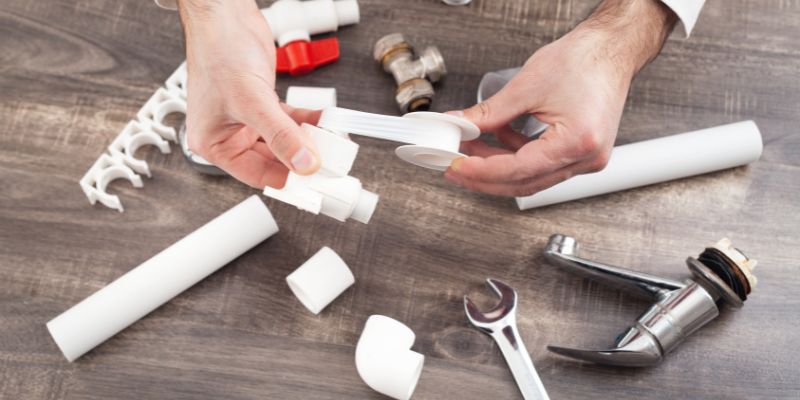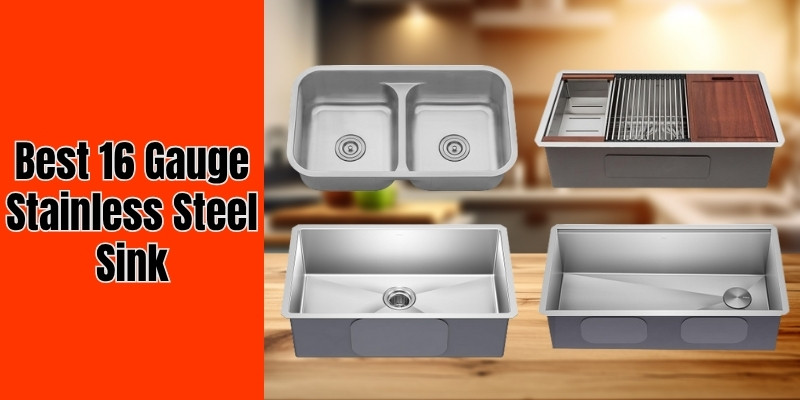Disclosure: This post contains affiliate links and I will be compensated if you make a purchase after clicking through my links. Learn More
When it comes to plumbing projects or any DIY involving pipes and fittings, one common question often arises – should I use Teflon tape on plastic fittings? It’s essential to ensure secure connections and prevent leaks, but using the right materials is equally crucial.
In this comprehensive guide, we will delve into the topic, providing expert advice, personal experiences, and credible sources to help you make informed decisions about using Teflon tape on plastic fittings.

Should I Use Teflon Tape on Plastic Fittings?
To get started, let’s address the primary question at hand – should you use Teflon tape on plastic fittings?
The answer is a resounding yes! While Teflon tape is traditionally used with metal fittings, it can also be beneficial when working with plastic fittings. The tape’s role is to create a tight and reliable seal that prevents leaks and ensures the joint remains watertight.
Using Teflon tape on plastic fittings comes with several advantages. It helps to fill small gaps or irregularities between the threads, leading to a more secure connection.
Additionally, Teflon tape acts as a lubricant during the assembly process, making it easier to tighten the fittings without damaging them. Overall, using Teflon tape on plastic fittings is a smart choice to achieve leak-free plumbing connections.
What is Teflon Tape and How It Works
Before we proceed, let’s take a closer look at what Teflon tape is and how it works. Teflon tape, also known as PTFE (Polytetrafluoroethylene) tape, is a thin, white tape that is commonly used to seal pipe threads. The unique properties of Teflon make it an ideal material for this purpose. It is highly resistant to chemicals, non-reactive, and has a low coefficient of friction.
When applied to the threads of pipe fittings, Teflon tape fills in the gaps and creates a seal that prevents liquids and gases from leaking. It is essential to wrap the tape in the same direction as the threads to avoid unraveling during the assembly process. This ensures a proper seal and a secure connection between the fittings.
How Do You Use Teflon Tape On Plastic Pipes?
Using teflon tape on plastic pipes is a common practice in plumbing projects to ensure a tight seal and prevent leaks. While teflon tape is primarily designed for metal fittings, it can also be used on plastic fittings with a few considerations.
Here’s a step-by-step guide on how to effectively use teflon tape on plastic pipes:
Prepare the pipe: Before applying teflon tape, ensure that the plastic pipe is clean and free from any debris or dirt. Use a cloth or solvent-based cleaner to wipe the surface thoroughly.
Wrap the tape: Start by securing the end of the teflon tape to the pipe thread. Hold the end firmly in place and wrap the tape around the threads clockwise. It’s important to wrap the tape neatly and tightly to avoid air pockets or unraveling.
Overlap the tape: As you continue wrapping the teflon tape, make sure to overlap it by about half of the tape’s width. This overlapping helps create a consistent seal along the entire threaded connection.
Apply moderate tension: While wrapping, apply moderate tension to the tape to ensure it adheres well to the threads. Avoid stretching the tape excessively, as it may cause it to tear or break.
Complete the wrapping: Continue wrapping the teflon tape until you cover the entire threaded area. Ensure that no threads are left exposed, as this can lead to potential leaks.
Seal the tape: Once you’ve reached the end of the threads, press the tape firmly against the pipe to seal it. This will help secure the tape in place and prevent it from unraveling during the installation process.
Trim any excess tape: If there is any excess tape extending beyond the pipe end or fittings, use a sharp knife or scissors to trim it. Be careful not to cut into the threads while trimming.
Install the fittings: After applying the teflon tape, you can proceed with installing the plastic fittings onto the threaded pipe. Ensure that you tighten the fittings sufficiently to create a watertight seal.
Remember, teflon tape is not a substitute for proper pipe joint compound when dealing with plastic fittings. In some cases, using joint compound specifically designed for plastic pipes can be more effective. Always consult the manufacturer’s instructions and recommendations for the best sealing method for your specific project.
Using teflon tape on plastic fittings can help create a reliable seal and minimize the risk of leaks. By following these steps, you can ensure a successful application of teflon tape on plastic pipes in your plumbing projects.
When To Use Teflon Tape On Plastic Fittings
Using teflon tape on plastic fittings can help create a secure and leak-free connection. However, it is important to understand when it is necessary to use teflon tape on plastic fittings to ensure optimal results. Below are the situations in which you should consider using teflon tape on plastic fittings:
Joining threaded plastic fittings: When connecting different plastic fittings together, teflon tape can act as a sealant, preventing leaks and improving the overall integrity of the connection.
Dealing with worn or damaged threads: If the threads on the plastic fittings are worn or damaged, teflon tape can help compensate for the imperfections and create a tight seal.
Working with tapered fittings: In some cases, plastic fittings may have tapered threads. Teflon tape can aid in creating a secure and reliable connection between these fittings.
Handling high-pressure applications: If you are working with plastic fittings in high-pressure applications, using teflon tape can provide an added layer of protection against leaks.
Connecting plastic fittings to metal fittings: When connecting plastic fittings to metal fittings, using teflon tape can help prevent galvanic corrosion, ensuring a long-lasting and reliable joint.
Remember, teflon tape should be applied properly to achieve the desired results. Ensure that the tape is wrapped tightly around the male threads, following the direction of the threads, and avoid overlapping the tape excessively. By using teflon tape in the appropriate situations, you can enhance the effectiveness and reliability of your plastic fittings connections.
When Not To Use Teflon Tape on Plastic Fittings
While Teflon tape is a versatile sealing solution, there are several situations where it’s best to avoid using it on plastic fittings. Understanding these exceptions can help prevent leaks, damage, and ensure the longevity of your plumbing system.
Soft or Fragile Plastic Fittings
Teflon tape can exert significant pressure when tightened, which may be too much for delicate plastic fittings to handle. Materials like PVC or ABS, especially in thin-walled fittings, can crack or break under this pressure. In these cases, consider using a liquid thread sealant specifically designed for plastic pipes, as it provides a secure seal without the risk of overstressing the material.
Fittings with Built-in Seals
Many modern plastic fittings come equipped with integrated seals or O-rings. These are designed to create a watertight connection without additional sealants. Using Teflon tape on these fittings can actually interfere with the built-in seal’s function, potentially causing leaks rather than preventing them. Always check if your fitting has a pre-installed seal before applying any additional sealant.
Chemical Incompatibility
While Teflon is known for its chemical resistance, it’s not universally compatible with all substances. In plumbing systems that transport harsh chemicals or solvents, the Teflon tape may degrade over time, compromising the seal. Always verify the chemical compatibility of Teflon tape with the substances in your plumbing system. If there’s any doubt, opt for a specialized chemical-resistant sealant instead.
Compression Fittings
Compression fittings, which are common in plastic plumbing systems, create a seal through the compression of a ferrule or ring against the pipe. Adding Teflon tape to these fittings can interfere with this mechanism, preventing proper compression and potentially causing leaks. The tape may also break off and contaminate the system. For compression fittings, rely on the designed sealing mechanism without additional sealants.
Flare Fittings
Similar to compression fittings, flare fittings in plastic systems create a seal through the flaring of the pipe end against a tapered surface. Teflon tape is unnecessary here and can prevent proper seating of the flared end, leading to leaks. Always keep flare fitting connections free of any additional sealants for optimal performance.
Push-to-Connect or Quick-Connect Fittings
These modern fitting types use internal O-rings or gaskets to create a seal when the pipe is pushed into place. Teflon tape is not only unnecessary but can actually prevent proper connection and sealing. The tape may interfere with the gripping mechanism or damage the internal seals, leading to connection failures.
Threaded Adapters with Tapered Threads
Some plastic threaded adapters use tapered threads that are designed to create a seal as they’re tightened. Adding Teflon tape to these can lead to over-tightening and potential cracking of the fitting. In these cases, follow the manufacturer’s instructions, which often recommend using the fitting without additional sealants.
High-Pressure Applications
In high-pressure plastic plumbing systems, Teflon tape may not provide sufficient sealing capability. These systems often require specialized high-pressure sealants or engineering plastics designed to withstand the pressure without additional sealing.
For a more comprehensive guide on when to avoid using Teflon tape in various plumbing scenarios, including metal fittings and specific applications, check out our detailed article on when not to use Teflon tape.
By understanding these situations where Teflon tape should be avoided on plastic fittings, you can make informed decisions in your plumbing projects, ensuring leak-free, durable connections that stand the test of time.
Teflon Tape alternatives for Plastic Fittings
Plastic plumbing joints require proper sealing to prevent leaks and ensure the integrity of the system. Here are some alternative ways to seal plastic plumbing joints:
Pipe Dope
Pipe dope is a pipe joint compound that comes in a paste or liquid form. It is formulated with lubricants, fillers, and chemicals that help create a tight seal. Here’s how to use pipe dope:
- Clean the threads on both the male and female ends of the fitting.
- Apply a thin, even layer of pipe dope to the male threads.
- Make sure the entire threaded area is covered.
- Insert the male end into the corresponding female threads and tighten well to create a secure seal.
Plumber’s Putty
Plumber’s putty is a soft, clay-like substance that is used for sealing various plumbing fixtures, including plastic joints. It is commonly used for sealing drains, sinks, and faucets. Here’s how you can use plumber’s putty for plastic plumbing joints:
- Take a small amount of plumber’s putty and knead it in your hands to soften it.
- Roll the putty into a rope-like shape.
- Apply the putty around the threads of the plastic fitting, ensuring it covers the entire area.
- Insert the fitting into the corresponding female threads and tighten firmly.
Remember that the choice of sealant may depend on the specific application and the type of plastic used in the plumbing system. It’s essential to follow the manufacturer’s instructions and recommendations to ensure proper sealing and avoid any potential damage to the plastic fittings.
Sealing plastic plumbing joints effectively helps maintain the overall functionality and reliability of the system. Choose the appropriate sealant and follow the correct sealing techniques to enjoy leak-free plumbing connections.
Frequently Asked Questions On Should I Use Teflon Tape On Plastic Fittings?
Can Teflon Tape Be Used On Plastic Fittings?
Yes, teflon tape can be used on plastic fittings. It provides a watertight seal to prevent leaks.
Can I reuse Teflon tape on plastic fittings?
It is not recommended to reuse Teflon tape. Once it has been wrapped around the threads and tightened, it may lose its effectiveness, leading to potential leaks upon reuse.
Is Teflon Tape Safe For Plastic Fittings?
Yes, teflon tape is safe for plastic fittings. It is non-toxic and does not degrade plastic materials.
How Does Teflon Tape Work On Plastic Fittings?
Teflon tape works by creating a tight seal between threaded connections, preventing leaks and ensuring a secure fit.
What Are The Benefits Of Using Teflon Tape On Plastic Fittings?
Using teflon tape on plastic fittings helps prevent leaks, provides a secure connection, and reduces the risk of damage to the fittings.
How many times should I wrap Teflon tape on the threads?
It is generally sufficient to wrap the Teflon tape around the threads 2-3 times. Avoid excessive wrapping, as it can lead to fitment issues.
Can I use Teflon tape on all types of plastic fittings?
While Teflon tape works well with many plastic fittings, it’s essential to check for compatibility with the specific type of plastic you are using.
Is Teflon tape resistant to chemicals?
Yes, Teflon tape is highly resistant to various chemicals, making it an excellent choice for sealing plumbing connections.
Can I use Teflon tape on high-pressure plumbing systems?
Yes, Teflon tape can be used in high-pressure plumbing systems, provided it is applied correctly and the fittings are compatible.
Does Teflon tape degrade over time?
Teflon tape has excellent durability, but over time and with exposure to certain chemicals, it may degrade. Regular inspections are recommended.
Are There Any Alternatives To Teflon Tape For Plastic Fittings?
Yes, there are alternatives to teflon tape for plastic fittings, such as liquid sealants or thread sealant tapes specifically designed for plastic assemblies.
Final Words
Using teflon tape on plastic fittings can provide an effective solution for preventing leaks. It creates a tight seal that helps to ensure a reliable connection between the fitting and the pipe. However, it is important to note that teflon tape is not suitable for all types of plastic fittings.
For fittings made from certain materials, such as pvc or cpvc, it is recommended to use a compatible sealant or adhesive instead. Additionally, proper installation techniques should be followed to maximize the effectiveness of teflon tape. This includes wrapping the tape in the correct direction and applying the appropriate amount of tension.
By considering the type of plastic fitting and following proper installation methods, using teflon tape can be a valuable tool in ensuring leak-free connections in plumbing and other applications.


